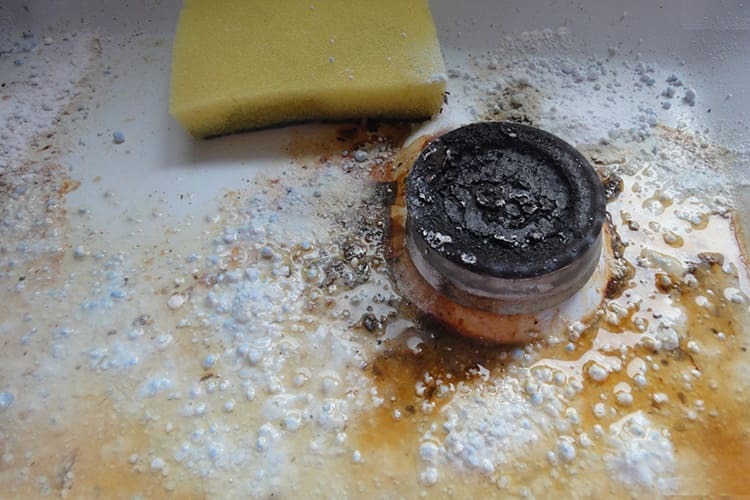According to the opinion of the majority of florists, care of sanseveria( the official name of the plant) is a pleasure. The only thing you need to clearly know how to transplant your mother tongue at home, so that he continues to delight with his bright leaves. The manipulation itself is not so complicated, but it implies certain features.
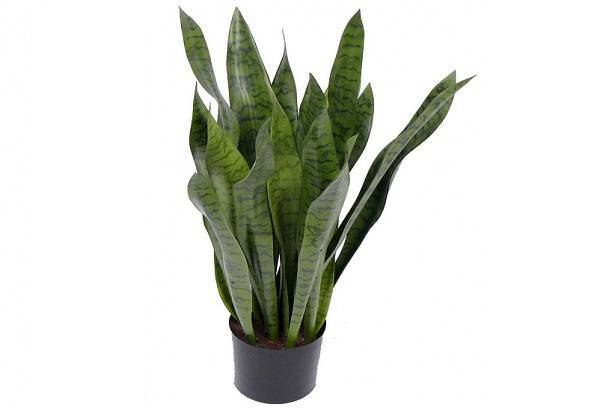
It should only be carried out when the roots of the plant fill the whole pot. Despite the unpretentiousness of the species, cramped and constrained restrictions can not be borne by any flower. To conduct manipulation at home, you do not need to have special skills, you just need to adhere to basic technical recommendations.
Frequency of manipulation and ground preparation rules
How often to transplant a plant depends on its age. And here the standard rule operates - the older the specimen, the less often it can be disturbed. The soil of a young flower is recommended to be renewed at least 1 time in 1-2 years. Adult tawny tongue needs this procedure once every 3-4 years. It is best to manipulate in the spring, then the pet will have time to recover.
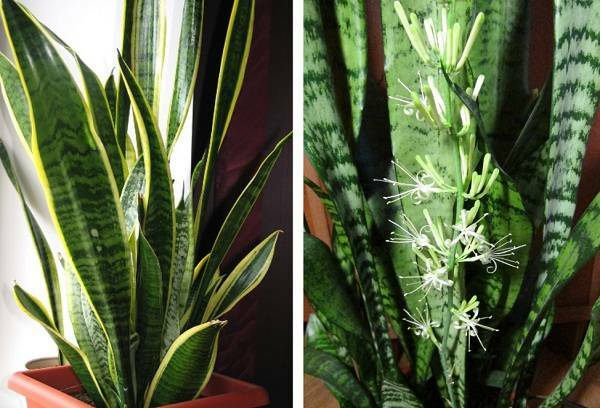
Tip: In cases where the plant is already mature and has reached an impressive size, the transplant procedure can be replaced by a simpler approach. It is necessary to remove the top layer of soil from the existing pot and replace it with fresh soil. True, this approach is allowed only when using a broad capacity for the plant, sufficient to contain all its roots.
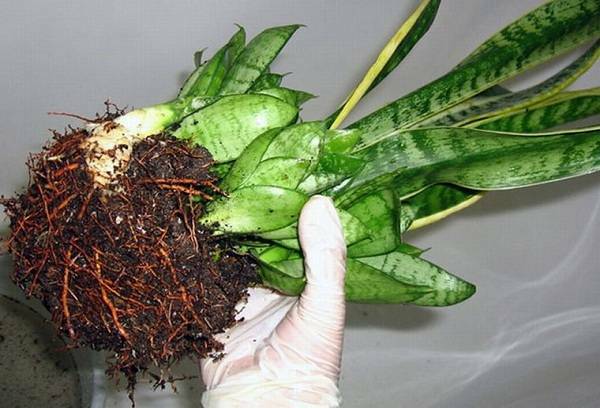
To properly transplant sansivieriyu in the home, you need to pay special attention to the composition of the soil. According to most experts, it should be as follows: 1 part humus and sand to 2 parts turf ground. Sometimes the turf is replaced by leafy earth and peat, taken in equal proportions.
Technical features of the
process When choosing a new pot, one must take into account the fact that the mother tongue is rooted in roots, not in depth. For this reason, you can only consider those tanks that have low sides, but a very wide bottom.

The very process of transplanting a plant at home looks like this:
- First the tongue should be thoroughly watered. If this is not done, you can provoke damage to the root system, and even remove a copy from the dry earth is quite difficult.
- In the prepared container we spread drainage and a layer of new soil.
- Carefully remove the flower from the old pot. If necessary, it can be slightly broken up with something not wide, for example, with a pencil.
- Before planting the plant in another pot, you need to gently separate the old soil from the root system. When detecting rotten roots, they can be cut and disinfected sections. At home, it is recommended to use special agents or crushed activated charcoal for this.
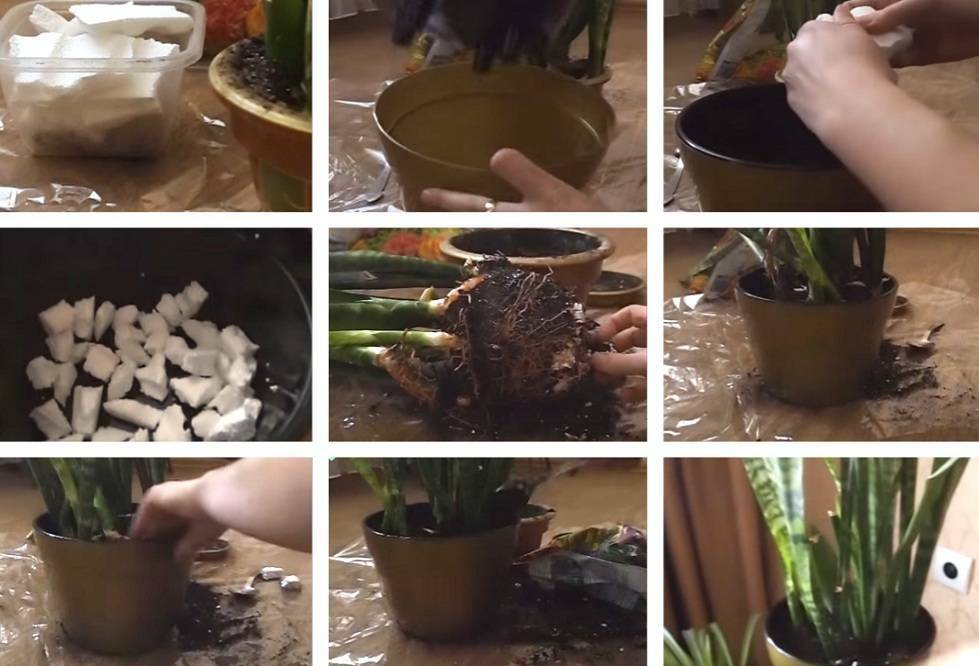
- In the new container we have a mother tongue strictly in the center, after which we sprinkle the rhizome with soil. All rootlets should be hidden.
- The soil is recommended to be lightly trampled and compacted, but it is not necessary to exert much pressure.
- After the process of transplanting the flower is completed, it is recommended to place it in the penumbra and refrain from watering for a few days. If the manipulation was carried out correctly, the mother tongue does not react to it in any way.
The period of plant transplantation at home is the best time to reproduce it by dividing the rhizome. It is this approach is the most effective of the amateur, you only need to proceed carefully so as not to damage the parts of the root used.


